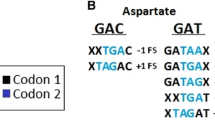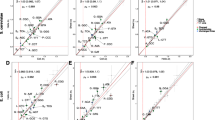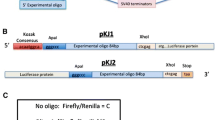Abstract.
Biased codon usage is common in eukaryotic and prokaryotic genes. Evidence from Escherichia, Saccharomyces, and Drosophila indicates that it favors translational efficiency and accuracy. However, to date no functional advantages have been identified in the codon–anticodon interactions involving the most frequently used (preferred) codons. Here we present evidence that forces not related to the individual codon–anticodon interaction may be involved in determining which synonymous codons are preferred or avoided. We show that the ``off-frame'' trinucleotide motif preferences inferrable from Drosophila coding regions are often in the same direction as Drosophila's ``in-frame'' codon preferences, i.e., its codon usage. The off-frame preferences were inferred from the nonrandomness of the location of confamilial synonymous codons along coding regions—a pattern often described as a context dependence of nucleotide choice at synonymous positions or as codon-pair bias. We relied on randomizations of the location of confamilial codons that do not alter, and cannot be influenced by, the encoded amino acid sequences, codon usage, or base composition of the genes examined. The statistically significant congruency of in-frame and off-frame trinucleotide preferences suggests that the same kind of reading-frame-independent force(s) may also influence synonymous codon choice. These forces may have produced biases in codon usage that then led to the evolution of the translational advantages of these motifs as preferred codons. Under this scenario, tRNA pool size differences between preferred and nonpreferred codons initially were evolved to track the default overrepresentation of codons with preferred motifs. The motif preference hypothesis can explain the structuring of codon preferences and the similarities in the codon usages of distantly related organisms.
Similar content being viewed by others
Author information
Authors and Affiliations
Additional information
Received: 10 November 1998 / Accepted: 23 February 1999
Rights and permissions
About this article
Cite this article
Antezana, M., Kreitman, M. The Nonrandom Location of Synonymous Codons Suggests That Reading Frame-Independent Forces Have Patterned Codon Preferences. J Mol Evol 49, 36–43 (1999). https://doi.org/10.1007/PL00006532
Issue Date:
DOI: https://doi.org/10.1007/PL00006532




